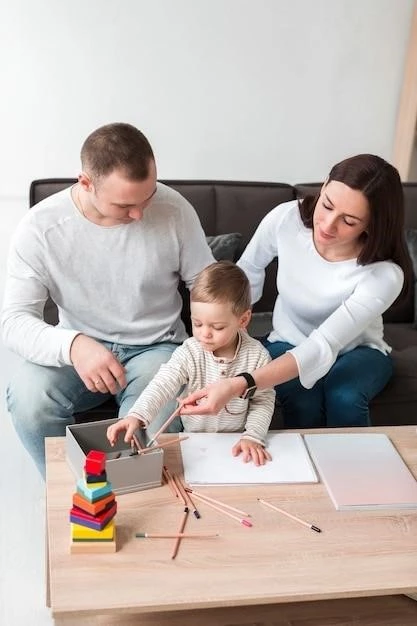Definition and Causes of Congenital Amputation
Congenital amputation is a rare condition where a limb is missing at birth. The causes can be genetic factors, exposure to harmful substances during pregnancy, or abnormalities in the womb. The exact cause may vary for each individual case.
Understanding the causes of congenital amputation is crucial for proper treatment planning and management. It requires a multidisciplinary approach involving medical professionals, genetic counselors, and rehabilitation specialists to address the specific needs of each patient.
By exploring the underlying reasons behind congenital amputation, healthcare providers can offer tailored treatment options, prosthetic solutions, and rehabilitation programs to improve the quality of life for individuals with this condition. Ongoing research and advances in medical science continue to enhance our understanding and management of congenital amputation.
Treatment Options for Congenital Amputation
When dealing with congenital amputation, the treatment options may include surgical interventions to improve limb function, prosthetic fitting for mobility support, and physical therapy to enhance strength and coordination. The choice of treatment depends on the individual’s specific needs, overall health, and goals for functionality.
Collaboration between medical specialists, including surgeons, prosthetists, and rehabilitation therapists, is essential to develop a comprehensive treatment plan that addresses both physical and emotional aspects of living with congenital limb loss. Regular follow-up evaluations are crucial to monitor progress and adjust interventions as needed to optimize outcomes and quality of life.
Prosthetic Solutions for Congenital Amputation
Prosthetic solutions play a vital role in enhancing mobility and independence for individuals with congenital amputation. Customized prosthetic devices are designed to fit the unique needs and lifestyle of each patient, offering improved functionality and comfort.
Advanced prosthetic technologies, such as myoelectric limbs and microprocessor-controlled components, continue to revolutionize the field, providing users with more natural movement and sensory feedback. Prosthetic rehabilitation programs are essential to help individuals adapt to their new devices and maximize their use in daily activities.
Collaboration between prosthetists, occupational therapists, and patients is key to achieving optimal outcomes and ensuring that prosthetic solutions meet the specific requirements and preferences of congenital amputees. Regular follow-up appointments and adjustments are essential to maintain the effectiveness and comfort of prosthetic devices over time.
Rehabilitation Programs for Individuals with Congenital Amputation
Rehabilitation programs for individuals with congenital amputation are tailored to address physical and emotional aspects of adapting to limb loss. These programs often include physical therapy to improve strength, balance, and mobility, as well as occupational therapy to enhance independence in daily activities.
Psychological support and counseling are integral components of rehabilitation, helping individuals cope with the emotional challenges associated with limb loss and adjust to their new reality. Peer support groups and mentorship programs can provide valuable encouragement and insights from others who have similar experiences.
By participating in structured rehabilitation programs, individuals with congenital amputation can improve their overall quality of life, regain confidence and independence, and learn valuable strategies to overcome obstacles they may encounter in their daily lives. Ongoing support and follow-up care are crucial to long-term success in the rehabilitation process.

Lifestyle Adjustments for Congenital Amputees
Living with congenital amputation requires individuals to make lifestyle adjustments to accommodate their unique needs. This may include adapting physical activities, modifying living spaces for accessibility, and incorporating assistive devices into daily routines to enhance independence.
Educational resources and training sessions can help congenital amputees learn effective strategies for managing challenges related to mobility, self-care, and social interactions. Building a strong support network of family, friends, healthcare professionals, and peer groups can also provide valuable assistance and encouragement.
By embracing lifestyle adjustments and seeking appropriate guidance, congenital amputees can cultivate a fulfilling and active life. Engaging in regular physical exercise, pursuing hobbies and interests, and maintaining a positive outlook are essential components of achieving a well-balanced and satisfying lifestyle despite the challenges of limb loss.
Support Systems for People with Congenital Amputation
Support systems play a crucial role in the well-being of individuals with congenital amputation. These systems encompass a network of family, friends, healthcare providers, and community organizations that offer emotional support, practical assistance, and resources to help individuals adapt to their condition.
Support groups specifically tailored to congenital amputees provide a safe space for sharing experiences, gaining insights, and building relationships with others facing similar challenges. Counseling services and mental health professionals can also offer guidance and strategies to cope with the psychological impact of limb loss.
By actively engaging with support systems, individuals with congenital amputation can access valuable support, encouragement, and guidance to navigate the physical, emotional, and social aspects of living with limb loss. Cultivating a strong support network is essential for promoting resilience, empowerment, and overall well-being.
Coping Strategies for Dealing with Congenital Amputation
Coping with congenital amputation requires the development of effective strategies to address the emotional and psychological impact of limb loss. Engaging in activities that promote self-expression, such as counseling, mindfulness practices, or creative outlets like art or music therapy, can help individuals process their feelings and emotions.
Setting realistic goals, maintaining a positive outlook, and building a strong support network are essential coping strategies. Connecting with others who have similar experiences, sharing stories, and seeking guidance from healthcare professionals can provide valuable insights and encouragement.
By focusing on resilience, self-care, and self-acceptance, individuals can navigate the challenges of congenital amputation with strength and determination. Developing coping strategies tailored to personal needs and preferences is key to fostering emotional well-being and finding a sense of empowerment in the face of adversity.
Latest Developments and Innovations in Congenital Amputation Research
Ongoing research in congenital amputation continues to drive advancements in treatment, prosthetic technology, and rehabilitation strategies. Scientists are exploring innovative approaches, such as 3D printing of customized prosthetics, nerve regeneration techniques, and bioengineering solutions to enhance limb functionality.
Genetic studies aim to identify underlying causes of congenital limb differences, paving the way for early detection and personalized interventions. Cutting-edge research in neuroprosthetics and bionic limbs holds promise for improved mobility and dexterity for individuals with limb loss.
Collaboration between researchers, clinicians, and industry partners is vital to translating research findings into practical solutions that benefit those with congenital amputation. By staying at the forefront of medical research, the field aims to enhance outcomes, quality of life, and opportunities for individuals living with limb differences.
